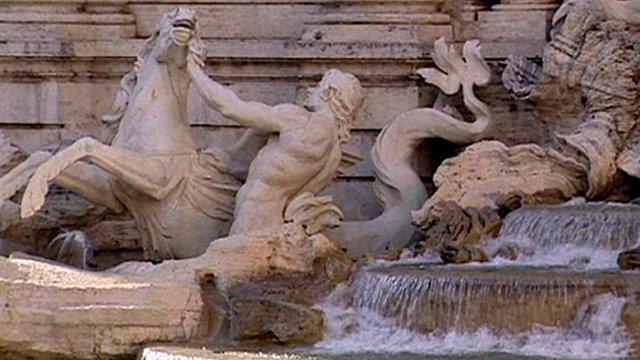Trevi fountain in Rome: Iconic monument renovated
- Published
Rome's Trevi fountain starts flowing again after a renovation, as James Reynolds reports
Water is once more cascading from the world famous Trevi fountain in the Italian capital Rome after it underwent a 17-month €2.2m (£1.6m) renovation.
The fountain, nearly 300 years old, is visited by millions of tourists every year.
But its poor structural condition was exposed in 2012 when bits of its elaborate cornice began falling off after an especially harsh winter.
The fountain became famous in 1960 with the release of the film La Dolce Vita.
In the film a voluptuous Anita Ekberg wades through its pristine waters - her hopelessly infatuated male co-star in her wake - in what critics say is one of the enduring cinematic images of the 20th Century.
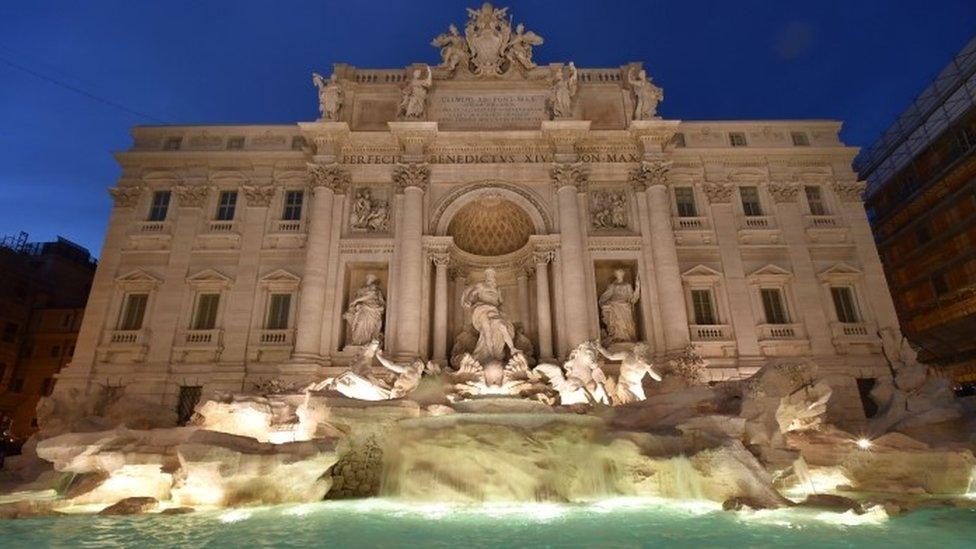
The restored fountain was opened to the public on Tuesday
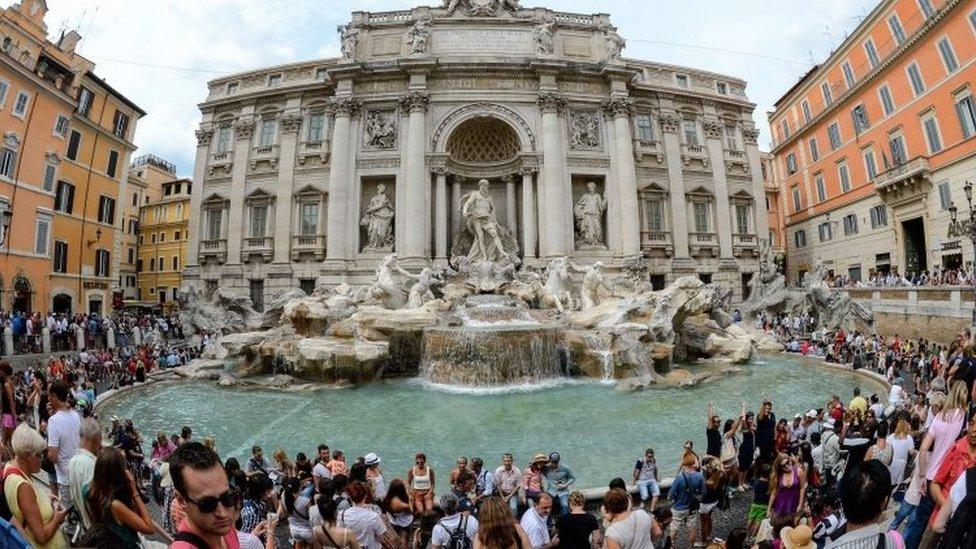
The fountain attracts millions of tourists every year
A team of 26 restorers have not only given the fountain a thorough cleaning, they have stopped it from crumbling away.
They have repaired cracks and steel supports with the aim of avoiding a repeat of the incident in 2012 when pieces of the fountain came crashing down.
Water once more tumbles from the base of the fountain's sea-god scene and new lighting shows off its gleaming Baroque facade.
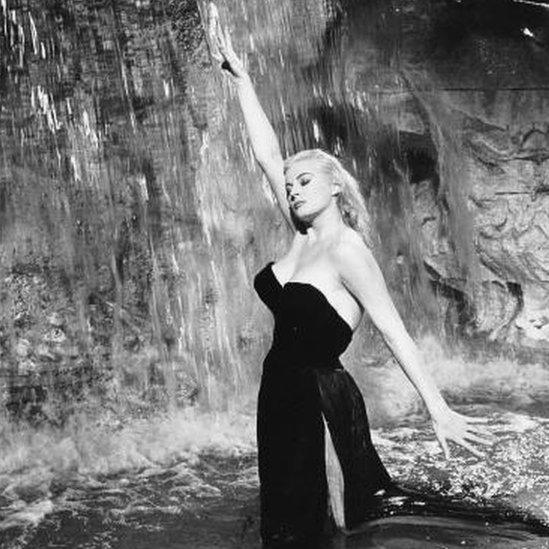
Anita Ekberg made the the Trevi fountain even more famous in her 1960 film La Dolce Vita
The repairs have been paid for by the Italian fashion house Fendi, founded as a leather goods business in Rome in the 1920s and now part of French luxury giant LVMH. It agreed a deal which allows it to hang a plaque near the monument for four years.
The company has also spent €320,000 cleaning up the city's lesser known Le Quattro Fontane (Four Fountains).

The Trevi fountain

Commissioned by Pope Clement XII in 1730
Last restored 23 years ago, it is the end point of one of the aqueducts that supplied ancient Rome with water
The Acqua Vergine runs for a total of 20km (12 miles) before flowing into the fountain
Tourists can drink from a special tap tucked away at one side
According to legend, the water source was discovered in 19 BC by thirsty Roman soldiers directed to the site by a young virgin - which is why it is called Virgin Waters
The tradition of throwing coins into the fountain was made famous by Frank Sinatra's Three Coins in the Fountain in the 1954 romantic comedy of the same name

- Published11 January 2015
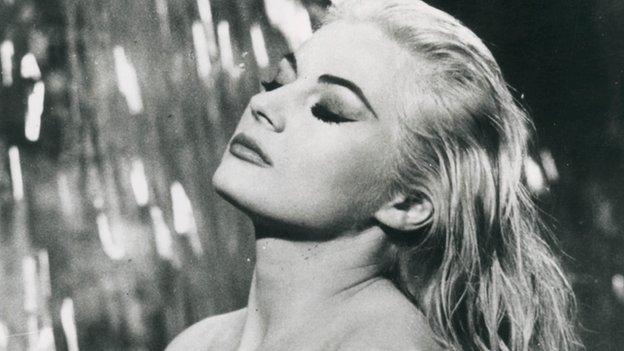
- Published14 September 2014
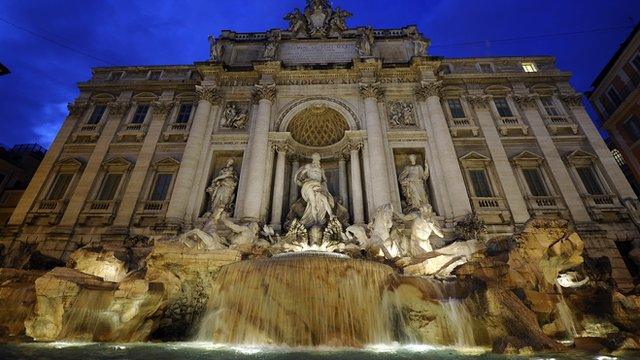
- Published29 January 2013
